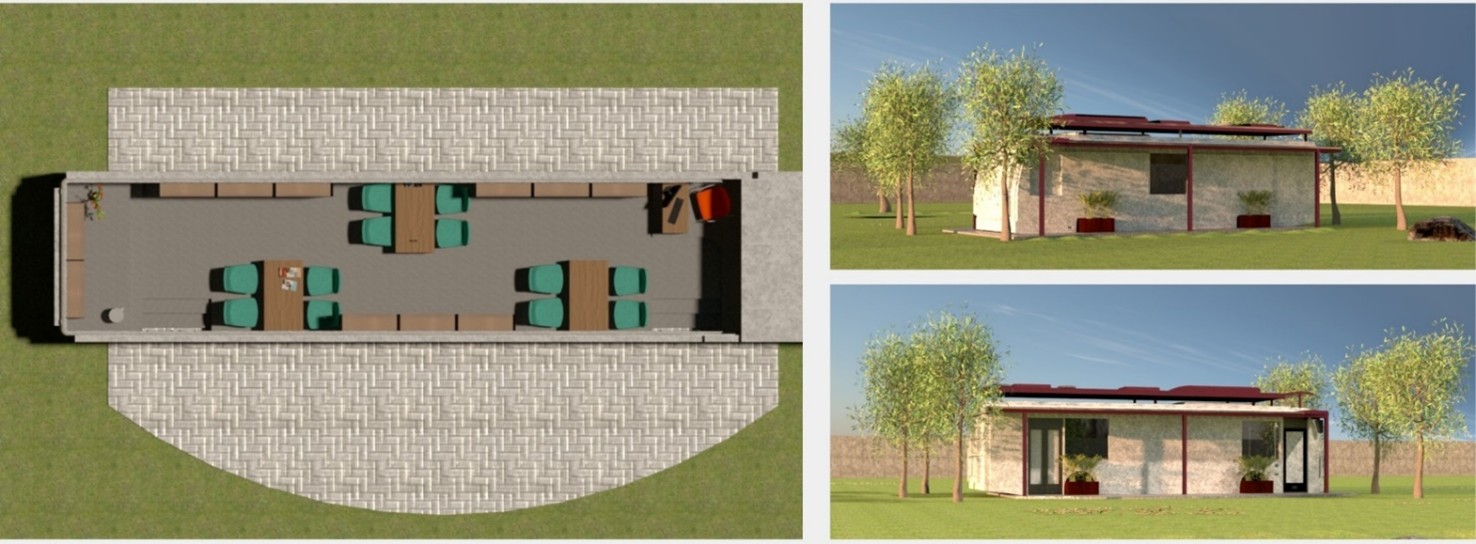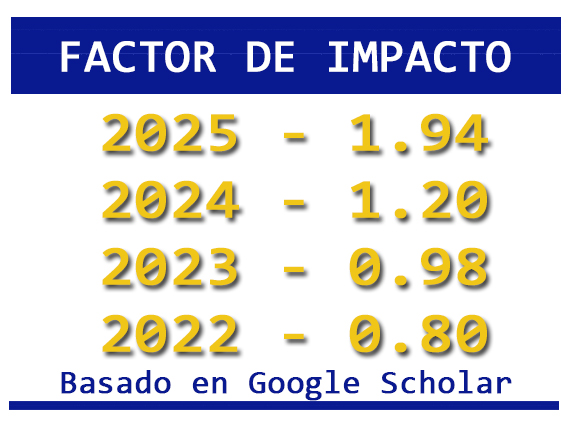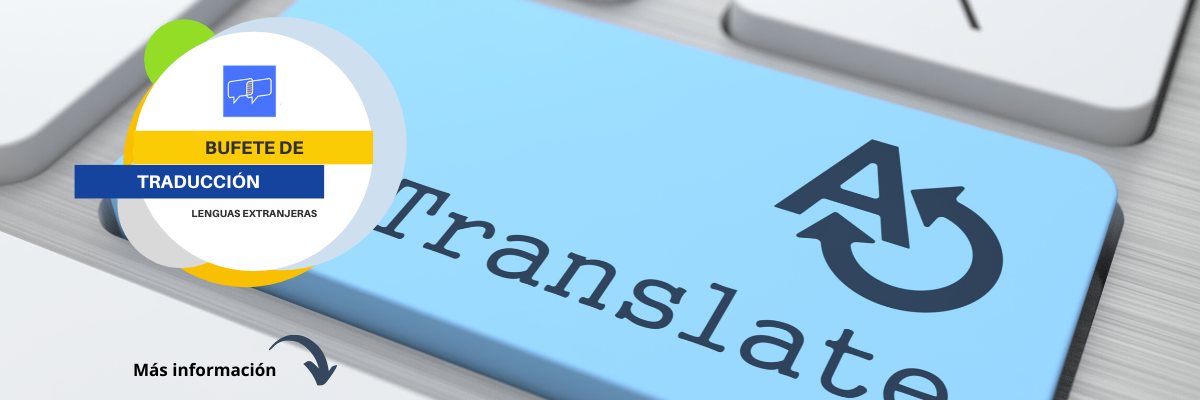Circular Economy in the Management of Public Transportation Units: The Case of Sonora
DOI:
https://doi.org/10.36790/epistemus.v19i38.439Keywords:
public transport, circular economy, Leopold matrix, bioclimatic designAbstract
The sustainable mobility approach considers, among other aspects, the life cycle of the means of transport used. At the end of their service life, these vehicles generate large volumes of solid waste. This paper analyzes the potential extension of the service life of decommissioned public transportation units through an architectural project offering a second- use alternative. The proposal includes bioclimatic equipment for components with potential reuse. Various tools, such as the Leopold Matrix, are applied to assess potential impacts by comparing the use of common materials. The findings demonstrate a significant positive impact from the reuse of these units. It is concluded that the development of the reuse alternative yields positive outcomes across physical, biological, and socioeconomic components, compared to a similar alternative analyzed using commonly used materials in the region.
Downloads
References
N. Estupiñan et al., “Ley De Transporte,” Banco de desarrollo de América Latina, vol. 1, p. 91, 2018.
M. De Matos and M. De Andrade, “Demand-side innovation policies and the planning of the public transportation system in the city of Curitiba (State of Paraná, Brazil),” WIT Transactions on the Built Environment, vol. 182, pp. 219–228, 2019, doi: 10.2495/UT180211.
E. M. Szumska, R. S. Jurecki, and M. Pawelczyk, “Life Cycle Cost (LCC) Level of an Urban Transport Fleet with Differentiated Share of Buses with Alternative Drive Systems,” Communications - Scientific letters of the University of Zilina, vol. 22, no. 3, pp. 68–77, 2020, doi: 10.26552/com.c.2020.3.68-77.
L. Li, H. K. Lo, and X. Cen, “Optimal bus fleet management strategy for emissions reduction,” Transp Res D Transp Environ, vol. 41, pp. 330–347, 2015, doi: 10.1016/j.trd.2015.10.007.
US EPA - SEMARNAT, Processing End-of-Life Vehicles: A Guide for Environmental Protection, Safety and Profit in the United States-Mexico Border Area. U.S. Environmental Protection Agency (EPA), 2017. Accessed: Sep. 16, 2024. [Online]. Available: https://www.epa.gov/sites/default/files/2020-10/documents/eol_vehicle_guide_final_english.pdf
R. Wasserbaur, T. Sakao, and L. Milios, “Interactions of governmental policies and business models for a circular economy: A systematic literature review,” J Clean Prod, vol. 337, no. December 2021, p. 130329, 2022, doi: 10.1016/j.jclepro.2021.130329.
H. Akram and T. E. Butt, “WET nexus between the three sectors – ‘waste to energy for transport,’” J Clean Prod, vol. 339, no. January, p. 130545, 2022, doi: 10.1016/j.jclepro.2022.130545.
A. De Almeida, R. Aparecida, B. Stolte, and R. De Castro, “Use of scrap tire rubber in place of SBS in modified asphalt as an environmentally correct alternative for Brazil,” J Clean Prod, vol. 33, pp. 236–238, 2012, doi: 10.1016/j.jclepro.2012.03.039.
T. D. Bui, J. W. Tseng, M. L. Tseng, and M. K. Lim, “Opportunities and challenges for solid waste reuse and recycling in emerging economies: A hybrid analysis,” Resour Conserv Recycl, vol. 177, no. October 2021, p. 105968, 2022, doi: 10.1016/j.resconrec.2021.105968.
NAFIN-KfW-GIZ, Guía Práctica Chatarrización para Tomadores de Decisión. Ciudad de México: Deutsche Gesellschaft für Internationale Zusammenarbeit (GIZ) GmbH, 2023.
C. Avilés and A. Rodríguez, “The sustainability of waste management models in circular economies,” Sustainability (Switzerland), vol. 13, no. 13, pp. 1–19, 2021, doi: 10.3390/su13137105.
J. Mardaljevic and J. Christoffersen, “‘Climate connectivity’ in the daylight factor basis of building standards,” Build Environ, vol. 113, no. January, pp. 200–209, 2017, doi: 10.1016/j.buildenv.2016.08.009.
UNAM, UNISON, UAT, U de C, CENIDET, and UAM Azcapotzalco, “Ener-Habitat.” Accessed: Sep. 10, 2024. [Online]. Available: http://www.enerhabitat.unam.mx/Cie/introduccion.jsp
Trimble Inc, “SketchUp.” Accessed: Sep. 10, 2024. [Online]. Available: https://help.sketchup.com/en/sketchup-viewer/getting-started-sketchup-desktop-viewer
LAB EEE, “Analysis SOL-AR | Laboratório de Eficiência Energética em Edificações,” LABORATORIO DE EFICIENCIA ENERGITCA EM EDIFICACOES. Accessed: Sep. 10, 2024. [Online]. Available: https://labeee.ufsc.br/downloads/softwares/analysis-sol-ar
B. Leopold, F. Clarke, B. Hanshaw, and J. Balsley, A procedure for evaluating environmental impact. Washington, D.C.: United States Department of the Interior, 1971. doi: 10.3133/cir645.
Gobierno de la República, “Catálogo de la Red Nacional de Bibliotecas Públicas,” Dirección General de Bibliotecas. Accessed: Jun. 12, 2023. [Online]. Available: https://www.gob.mx/cultura/acciones-y-programas/catalogo-de-la-red-nacional-de-bibliotecas-publicas
Servicio Meteorológico Nacional, “Información Estadística Climatológica,” Gobierno de México. Accessed: Oct. 19, 2023. [Online]. Available: https://smn.conagua.gob.mx/es/climatologia/informacion-climatologica/informacion-estadistica-climatologica
Instituto Nacional de Estadística y Geografía., “Cuéntame de México,” INEGI. Accessed: Jun. 12, 2023. [Online]. Available: https://cuentame.inegi.org.mx/monografias/informacion/son/territorio/clima.aspx?tema=me&e=26
OECD, “México: Avances en la transición hacia cero emisiones netas,” 2021, Organisation for Economic Co-operation and Development, Paris. Accessed: Aug. 27, 2023. [Online]. Available: https://www.oecd.org/regional/RO2021-Mexico-ES.pdf
Gobierno de México, México: Inventario Nacional de Emisiones de Gases y Compuestos de Efecto Invernadero, 1990-2019. Ciudad de México: Secretaría de Medio Ambiente y Recursos Naturales / Instituto Nacional de Ecología y Cambio Climático, 2022. Accessed: Oct. 08, 2024. [Online]. Available: https://unfccc.int/sites/default/files/resource/InventarioGEI_Mexico_1990_2019.pdf
Gobierno de México, NORMA Oficial Mexicana NOM-031-STPS-2011, Construcción-Condiciones de seguridad y salud en el trabajo. Ciudad de México: Secretará del Trabajo y Previsión Social, 2011. Accessed: Oct. 01, 2024. [Online]. Available: https://www.stps.gob.mx/bp/secciones/dgsst/normatividad/normas/Nom-031.pdf
Cámara de Diputados del H. Congreso de la Unión, “Ley general de archivos,” Ley General de Archivos, no. 2 (266), p. 4, 2023.
Consejo Nacional para Asuntos Bibliotecarios de las Instituciones de Educación Superior A. C., Normas para Bibliotecas de Instituciones de Educación Superior e Investigación. 2012.
E. Neufert, Arte de Proyectar en Arquitectura, 16va, ed. Barcelona: Gustavo Gili, 2009.
G. John R. and J. O. Lewis, The Bioclimatic Architecture, no. Dg Xvii. Dublin: LIOR E.E.I.G., 1997.
R. Celis, “Estudio de sistemas pasivos para la iluminación natural del aula taller del edificio Creas en Pozuelo de Alarcón,” 2018.
Chaos Software, “V-Ray.” Accessed: Oct. 01, 2024. [Online]. Available: https://www.chaos.com/es/vray
A. Garmendia, A. Salvador, C. Crespo, and L. Garmendia, Evaluación de impacto ambiental, Pearson-Pr. Madrid, España: Pearson Educación, S.A., 2005.

Downloads
Published
How to Cite
Issue
Section
License
Copyright (c) 2025 EPISTEMUS

This work is licensed under a Creative Commons Attribution-NonCommercial-ShareAlike 4.0 International License.
The magazine acquires the patrimonial rights of the articles only for diffusion without any purpose of profit, without diminishing the own rights of authorship.
The authors are the legitimate owners of the intellectual property rights of their respective articles, and in such quality, by sending their texts they express their desire to collaborate with the Epistemus Magazine, published biannually by the University of Sonora.
Therefore, freely, voluntarily and free of charge, once accepted the article for publication, they give their rights to the University of Sonora for the University of Sonora to edit, publish, distribute and make available through intranets, Internet or CD said work, without any limitation of form or time, as long as it is non-profit and with the express obligation to respect and mention the credit that corresponds to the authors in any use that is made of it.
It is understood that this authorization is not an assignment or transmission of any of your economic rights in favor of the said institution. The University of Sonora guarantees the right to reproduce the contribution by any means in which you are the author, subject to the credit being granted corresponding to the original publication of the contribution in Epistemus.
Unless otherwise indicated, all the contents of the electronic edition are distributed under a license for use and Creative Commons — Attribution-NonCommercial-ShareAlike 4.0 International — (CC BY-NC-SA 4.0) You can consult here the informative version and the legal text of the license. This circumstance must be expressly stated in this way when necessary.
The names and email addresses entered in this journal will be used exclusively for the purposes established in it and will not be provided to third parties or for their use for other purposes.














